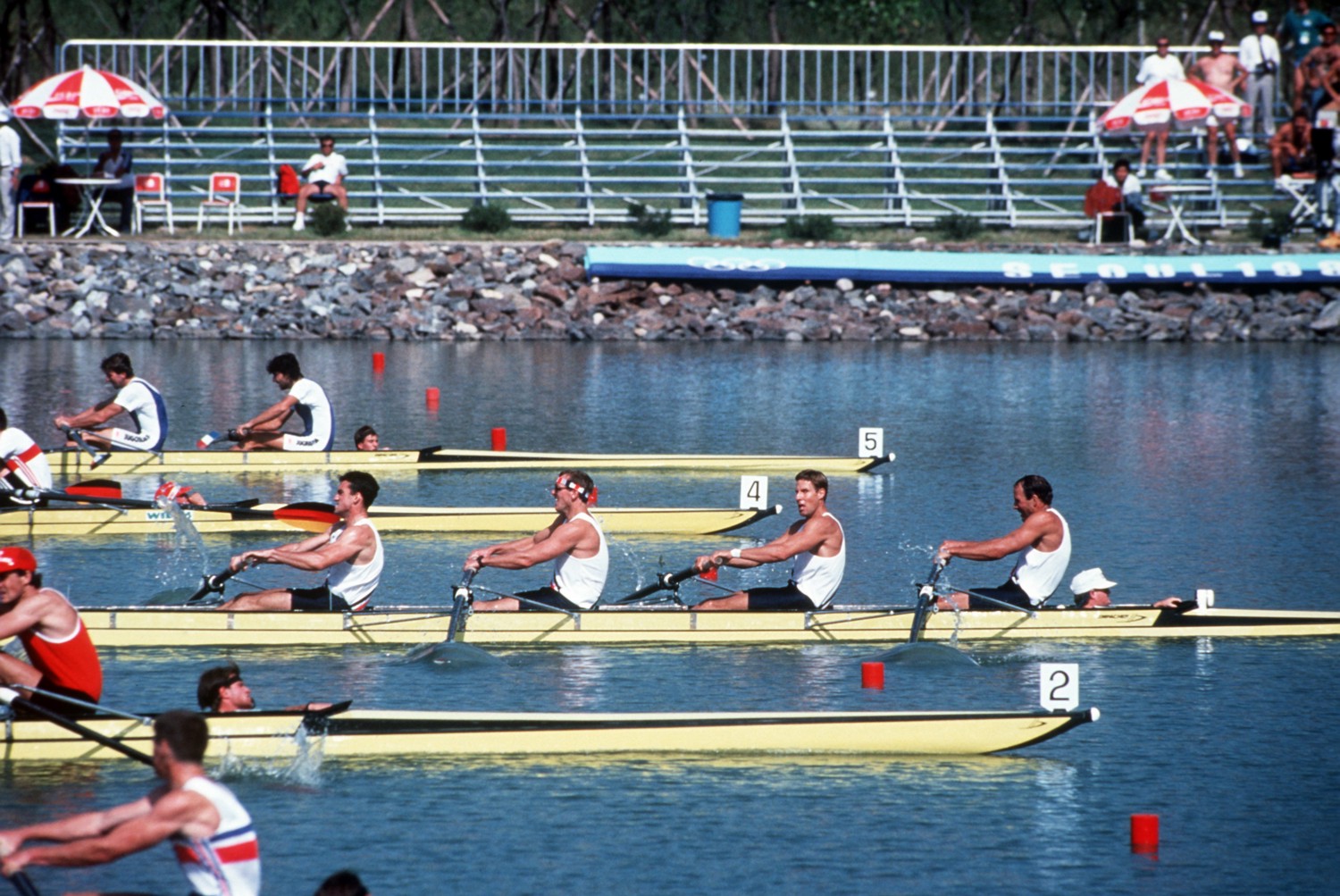Healthy, active, productive activities are often hard to start. Learn this cycle to identify when to use your willpower to help.
Joshua Spodek’s (PhD MBA) book, Leadership Step by Step, launches in February. He is an adjunct professor and coach of leadership and entrepreneurship at NYU and Columbia. His courses are available online at SpodekAcademy.com and he blogs daily at JoshuaSpodek.com.
Yesterday was rowing day. It was also the first hot, humid, sticky day in New York City. I didn’t feel like doing it. I could think of dozens of things I’d rather do. Unlike those guys in the picture, I row indoors on a machine.
I stuck with my plan, though, with my usual trick: changing into my workout clothes, an easy action, knowing what would happen next. Eventually my mind said, “I’m in the workout clothes. I might as well work out.”
Once I started rowing, everything changed. I got hot and sweaty, but I liked it. Before I started I didn’t want to get hot and sweaty, but once I did I felt like, that’s the point: I’m keeping fit, I should sweat.
You know the feeling. It doesn’t just come from exercise.
Before starting to write this piece, I knew I wanted to write. I wrote out my notes but when I sat at the computer, everything seemed appealing except writing — browsing, eating, etc.
Now that I’m writing, I enjoy it. I want to keep writing. My friend instant messaged me and I told her I couldn’t talk now. Thirty minutes ago I would have chatted and put off writing.
Notice the similarity? Although the behaviors of rowing and writing look different from the outside, emotionally, the pattern is similar.
Many people will identify the activities as flow activities, if you know the term (if you don’t, it’s not necessary for now). I’m focusing on the emotional pattern leading up to and following the activities.
The Emotional Cycle
You know the cycle. It goes like this:
- You know something will improve your life and you want to do it
- You look forward to doing it later
- Just before doing it you suddenly feel like you don’t want to do it
- Starting takes a lot of willpower
- Once you start you want to keep doing it
- After you finish you’re glad you did it and find yourself feeling like in step 1
Examples include
- Going to the gym, or physical exercise in general
- Meditating, or mental exercise in general
- Avoiding unhealthy foods
- Working on projects you want to work on
- Writing
- Most flow activities
- Cold showers (if you’re into them like I am) or any sidcha
- and more
The challenge is getting past step 3: “Just before doing it you suddenly feel like you don’t want to do it.”
If you do, you’ll be glad you did. Most of us move on to something else and don’t do it. That’s why gyms that were full in January are empty after Valentine’s Day.
How to use the cycle
I’m writing about this cycle to help people recognize the opportunities to put in a little extra willpower to get great reward out. Willpower fades fast, so it rarely helps for doing something that requires it for a long time.
This cycle is different, which is why it’s worth recognizing. When you know you’ll enjoy the activity once you start, you know you only need willpower to start.
Willpower is like a car’s starter motor. If you try to drive with it, it will break after moving about fifty feet. But if you use it to start the engine and then stop using it, it works great. Your emotional system is your main engine. Once it starts, it keeps you going.

So when you know something improves your life but you lose momentum just before doing it, use your willpower, or use your tricks, but get started. You’ll keep going once you do.
Now, if you’ll excuse me, I have to edit my book draft, because I’m in the mood for writing from writing and I don’t want to lose the mood and have to use my starter motor again.
Sign up for Josh Spodek’s mailing list.
Originally published at medium.com


